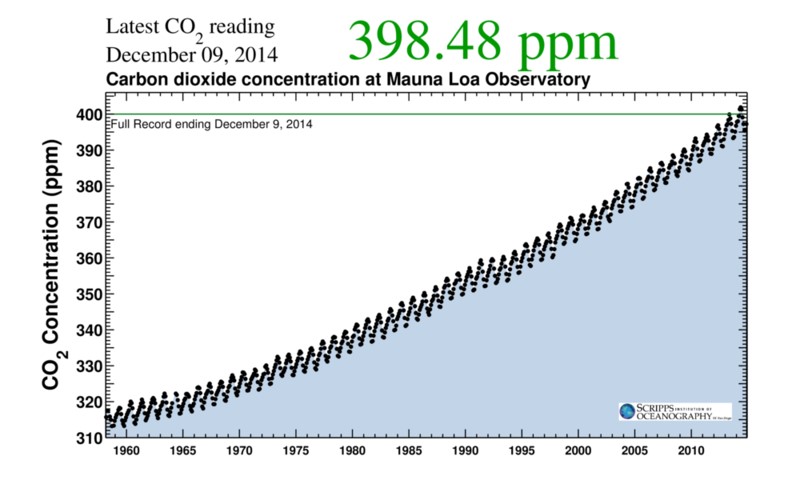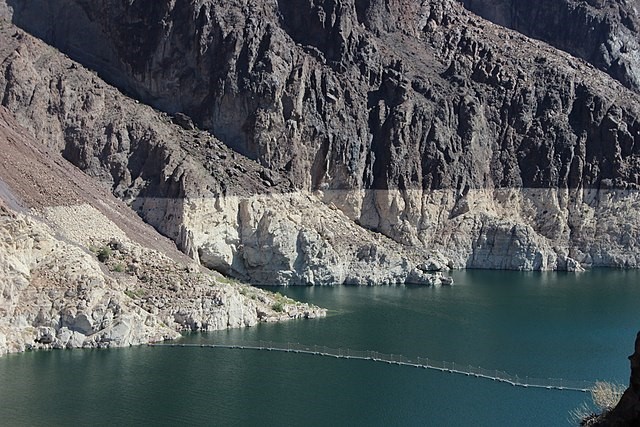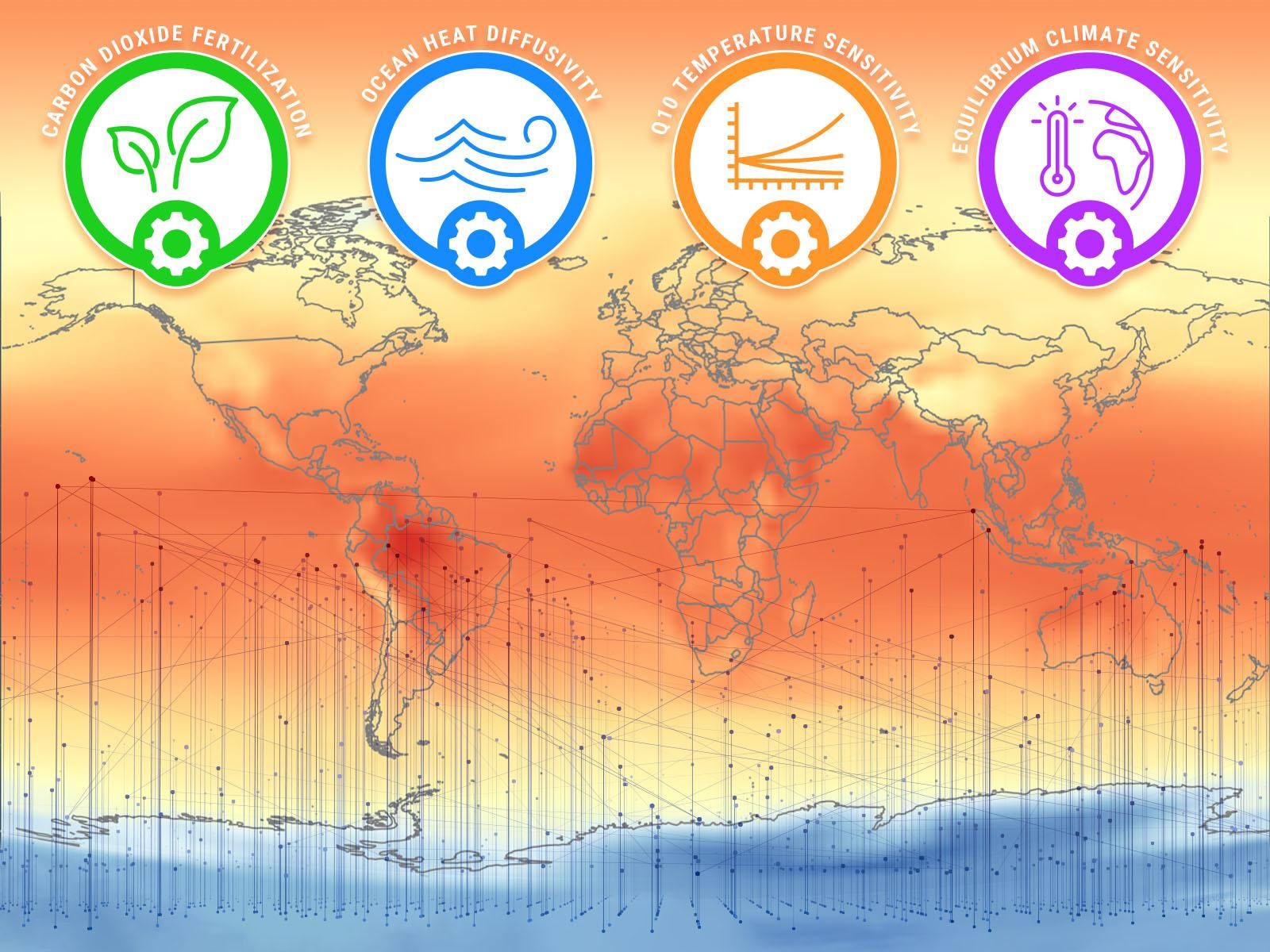Climate Science
What is climate science?
Climate science, or climatology, is the study of Earth’s climate. Climate scientists want to better understand our planet’s atmosphere and how it affects various ecosystems. Many equate climate with the weather. And indeed, the word climate is usually defined as the average weather conditions in a particular area over a long-term period, such as years or decades. But climate science touches far more than weather trends. It explores how climate conditions affect a variety of habitats such as oceans, rivers, forests, deserts, and grasslands, as well as the creatures living within those habitats.
Conducting climate science is essential to understanding the effects of global warming and climate change. In the 20th century, the global average surface temperature increased about 2 °F, and the warming rate per decade has significantly increased in the past 40 years. This warming has been driven by increasing atmospheric levels of greenhouse gases, so named because their heat-trapping properties create a “greenhouse effect.” Greenhouse gases include carbon dioxide, methane, and nitrous oxide, and their rising concentrations in the air have been driven by human activity such as burning fossil fuels.
Climate scientists measure changes to the planet using a variety of techniques. They study ice cores taken from the North and South poles to gauge changes to the environment over centuries. They sample air to see how concentrations of greenhouse gases are evolving and examine trees to chart how forest conditions have changed over time. They build computer models that predict changes to ecosystems based on historical data. These and other methods illuminate what causes changes to the climate, what effects those changes have on ecosystems, how they will affect wildlife and humans, what can be done to slow or reverse harmful climate trends, and how humans and animals might adapt to a changing world. Disciplines related to climatology include atmospheric science, hydrology, environmental microbiology, cloud physics, meteorology, and Earth system modeling.
Climate science history
Scientists have been studying Earth’s climate for hundreds of years. One of the earliest discoveries came from Jan Baptista van Helmont, a Flemish chemist who in the 1640s established the idea of gases and coined the name “gas” from the Greek word for chaos. Among his scientific contributions, van Helmont discovered a gas that would later become known as carbon dioxide. In the 1800s, scientists began understanding the role of gases in trapping heat in the atmosphere. The French mathematician Joseph Fourier first described the idea that Earth’s atmosphere retains the sun’s heat in 1824. In the 1850s, American scientist Eunice Foote and British physicist John Tyndall independently documented the heat-trapping capabilities of carbon dioxide and water vapor. And in the late 1890s, Swedish chemist Svante Arrhenius calculated how changes in carbon dioxide in the air would affect surface temperatures.

It wasn’t until the 1900s that scientists began making the explicit link between industrialization and a warming world. Guy Stewart Callendar, an engineer in Britain, published a seminal paper in 1938 linking carbon dioxide emissions from fossil fuel combustion to rising global temperatures. In the 1950s, Charles Keeling began measuring atmospheric concentrations of carbon dioxide. Today, what’s known as the Keeling Curve provides a clear, graphical representation of rising carbon dioxide levels.
Early discoveries of a link between carbon dioxide and temperature were not perceived to be dangerous. Arrhenius, for example, suggested in his 1908 book Worlds in the Making that the future might bring "more equable and better climates" in some regions. But by the 1980s, scientists such as the National Aeronautics and Space Administration’s James Hansen had sounded the alarm. “We have already reached a point that the greenhouse effect is important,” Hansen said in his historic Senate testimony on June 23, 1988. “It may also have important implications other than for creature comfort.” During the testimony, he reported that the Earth was warmer in 1988 than at any time in the history of instrumental measurements.
Climate science importance and outcomes
Nearly every country in the world has agreed to reduce greenhouse gas emissions as part of the Paris Agreement, an international pact aimed at limiting global warming to at least 2 degrees Celsius—preferably 1.5. This agreement is informed by climate science. The Intergovernmental Panel on Climate Change (IPCC), which the United Nations established in 1988, delivers periodic reports that assess the latest scientific knowledge on climate change.
Hundreds of experts have convened to create these reports, which have provided crucial scientific consensus that the climate is changing rapidly because of human activities. This consensus is the backdrop for international action like the Paris Agreement. The sixth IPCC assessment report, which was released in 2021, warned that “human-induced climate change is already affecting many weather and climate extremes in every region across the globe.” The report further stated that it would take centuries to millennia to reverse many climate changes resulting from past and future greenhouse gas emissions, especially changes in the ocean, ice sheets, and global sea level.
The United States also conducts its own periodic assessment of climate science and impacts. The Fourth National Climate Assessment documented aspects of climate change, including changing precipitation patterns, rising sea levels, and the increasing frequency and intensity of extreme weather events such as heat waves and forest fires.

Climate science enables these insights. Because of Charles Keeling’s pioneering efforts to measure carbon dioxide in the atmosphere, for example, we now have a record spanning more than 60 years. In June 2021, the monthly average concentration of carbon dioxide in the air at the National Oceanic and Atmospheric Administration’s Mauna Loa Atmospheric Baseline Observatory peaked near 420 parts per million—more than 100 parts per million higher than in 1958 when Keeling measurements first began at the site. U.S. scientists have also documented shrinking sea ice and snow cover extent globally over the past several decades.
In addition to documenting the changing climate and its impacts, climate research can inform strategies for mitigating, and adapting to, climate change. Researchers at Pacific Northwest National Laboratory (PNNL), for example, are modeling river flows on the Colorado River to help decision makers navigate and plan for increasingly complex decisions about water supplies.
Climate science benefits and challenges
By illuminating the world around us and how it is changing, climate science benefits everything from human health to electricity supplies. Increasingly, governments and businesses recognize that climate change represents a fundamental risk to economies and societies worldwide. Thanks to decades of research, climate scientists have been able to determine that the planet is on a warming trajectory because of human activities such as burning fossil fuels and clearing land for farming and real estate development. Now, climate science is helping gauge the effects of this warming today and predict impacts in the future.
While climate scientists have come to a general agreement on human-based contributions to climate change, understanding how this change is unfolding and predicting how quickly certain effects might be seen is a multifaceted challenge. Already, many scientists have expressed surprise at the intensity of events such as historic heat waves, rapidly growing hurricanes, or accelerated melting trends. The data continues to change, and so does our understanding of how different interlinked ecosystems are evolving.
The high stakes of climate science—and its implications for the fossil fuel industry—have led to a charged and sometimes contentious atmosphere for researchers in the field. Prominent climate scientists have received hate mail and death threats. Unlike many other scientific fields, climate science tends to draw controversy and is sometimes subject to censorship of one form or another. This adversity has been driven by political debates about how climate change should be addressed.
Climate science limitations
Climate science can deliver data on temperature trends, for example, or atmospheric changes. But it is not possible to forecast when certain impacts might happen, or where. Nature is continually educating scientists about the limitations of computer models that may not account for specific outcomes or timing. In a 2016 study, for example, PNNL researchers found that microbes in soil were less adaptable to changing conditions than expected. "We can't assume that soils will respond to climate changes in the ways that many scientific models have assumed,” said researcher Ben Bond-Lamberty.
Scientists have no crystal ball to predict exactly how climate impacts will play out or what they will mean across geographic areas and species. Some wildlife species will be able to adapt to changing environmental conditions by migrating to new habitats or evolving new traits. Others are at risk of becoming extinct. Climate science can point to signposts of these changes, but it cannot always predict when exactly they will happen or what they will mean for other species. When a string of devastating events, including unprecedented heat in the U.S. Pacific Northwest and deadly flooding in Europe, occurred in the summer of 2021, a climate scientist was asked whether climate change is happening faster than predicted.
“I’m less convinced that recent events tell us that things are moving faster than projections have suggested,” said Daniel Swain of the University of California, Los Angeles, during an interview with Grist, an independent climate-oriented media organization. “But I am increasingly convinced that we’ve underestimated the impacts of some of the changes that were actually fairly well predicted.”
Climate science at PNNL
Scientists continue to conduct research to understand climate change and enable effective responses. They do this by combining observations from the field and the lab with modeling and advanced computation. An international leader in Earth systems science, PNNL has contributed seminal knowledge about how aerosols in the atmosphere influence the planet’s energy balance.
PNNL is home to the Atmospheric Radiation Measurement user facility, where researchers use three fixed-location atmospheric observatories, along with mobile and aerial observatories, to measure long-term and episodic data involving radiative fluxes, cloud and aerosol properties, precipitation, and other characteristics of the atmosphere. Researchers also use the Environmental Molecular Sciences Laboratory (EMSL, another Department of Energy user facility at PNNL), to understand environmental processes at the molecular level.
PNNL’s expertise in data and geospatial sciences, along with hydrology, high-performance computing, and cloud-based computing approaches, document and predict both long-term trends and extreme events. One focus is the critical Arctic region, where warming influences environmental conditions around the world. Research led by PNNL has shown, for example, that a decrease in snow cover has accounted for about 70 percent of the reduction in Arctic surface reflectivity since the 1980s.
Climate change research at PNNL also explores the role of microbiomes, the microbial communities that influence a wide range of processes in soils and watersheds. The work helps illuminate how carbon in soils becomes destabilized and the resulting implications for the climate. Related research has shown the importance of coastal wetlands in sequestering carbon. As the intersection of water, land, and atmosphere, coastal regions reveal much about a multifaceted Earth system. PNNL scientists aim to improve our understanding of how plants and microbes in a coastal area affect an ecosystem’s nutrient and carbon cycles. PNNL also leads field studies and computer model development to help us visualize and characterize what ecosystems can endure when regional or global conditions change and coastlines become more susceptible to extreme weather events like flooding.
Beyond coastal areas, we are learning more about how trees respond to extreme conditions and what this could mean for forests. A 2020 study found that rising temperatures and carbon dioxide are driving a trend toward younger, shorter trees. PNNL researchers contribute to the Next Generation Ecosystem Experiment–Tropics, a 10-year project involving multiple national research labs. The project’s goal is to enhance predictions of how tropical forests will change in a warming climate and whether they will continue to serve as a carbon sink over the 21st century.

Increasingly, citizen scientists and students are contributing to the growing store of observations that inform how we understand and respond to climate change. PNNL is supporting widespread collaboration in climate science in a variety of ways. The laboratory’s modeling expertise contributes to the development of sophisticated predictive models such as the Department of Energy’s Energy Exascale System Model, a project to investigate energy-relevant science using code optimized for the Department of Energy's advanced computers.
PNNL also provides data and tools that are more broadly accessible. One of them is a simple, web-based version of a climate modeling tool developed at PNNL. The tool, called Hector UI, allows non-experts to explore climate models, and it teaches university students to learn how to use climate models for research. It also allows researchers to easily generate and incorporate new data into their own work. The goal, said PNNL data scientist Chris Vernon, is to “find a way to push fundamental science forward while broadening the reach of the global climate modeling community.”